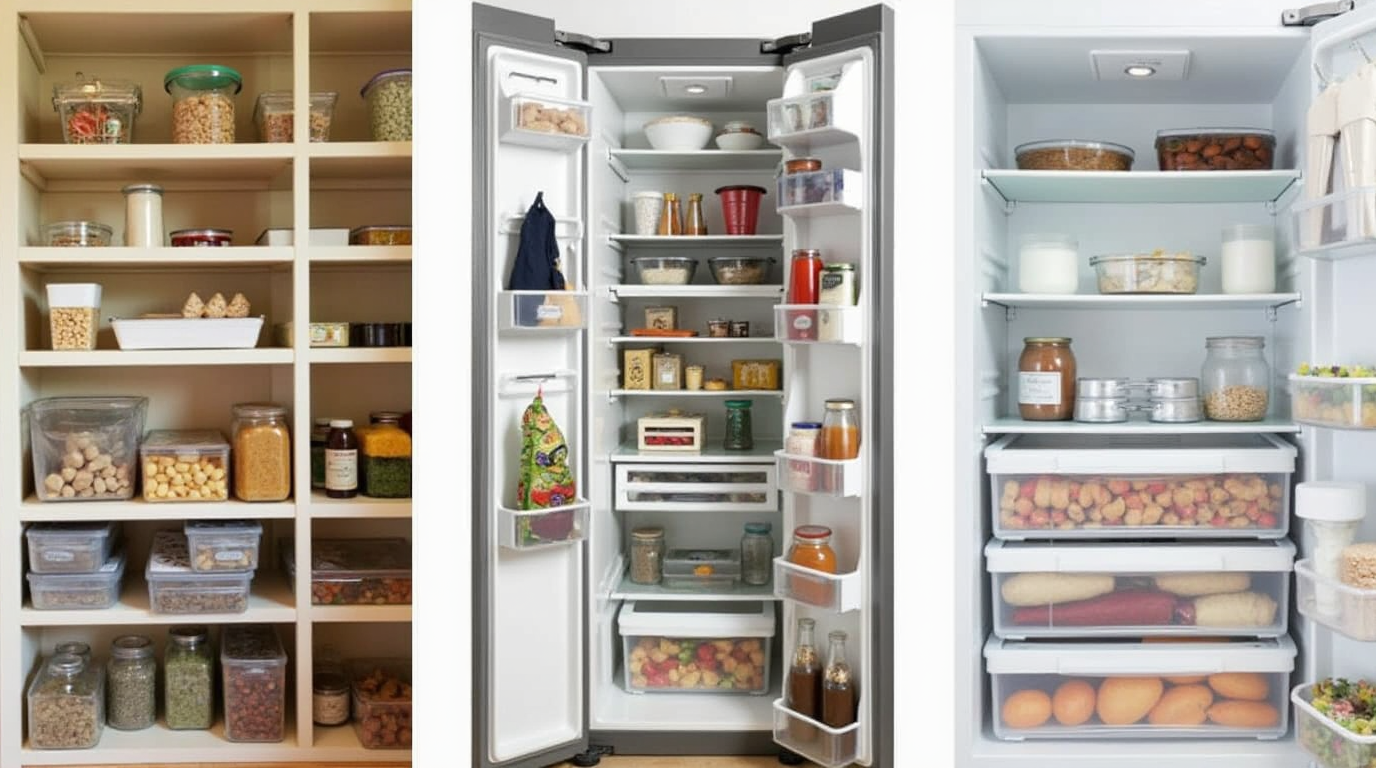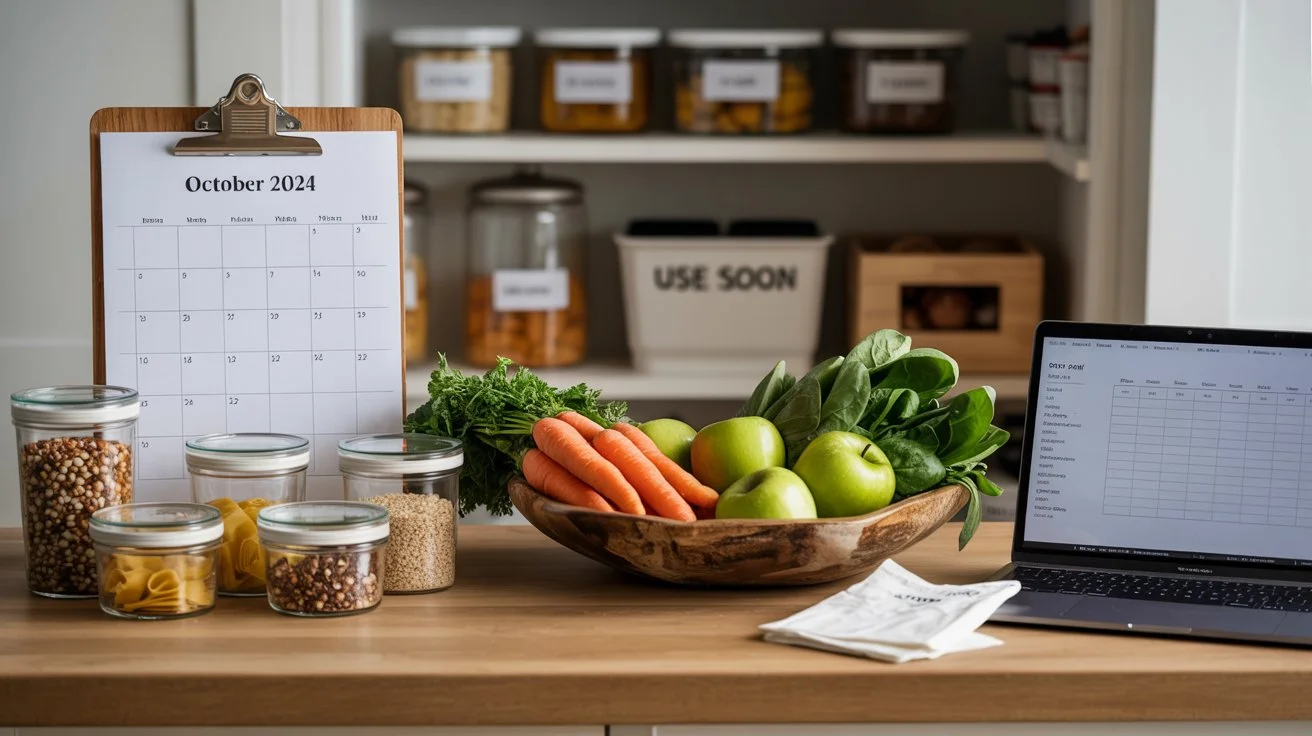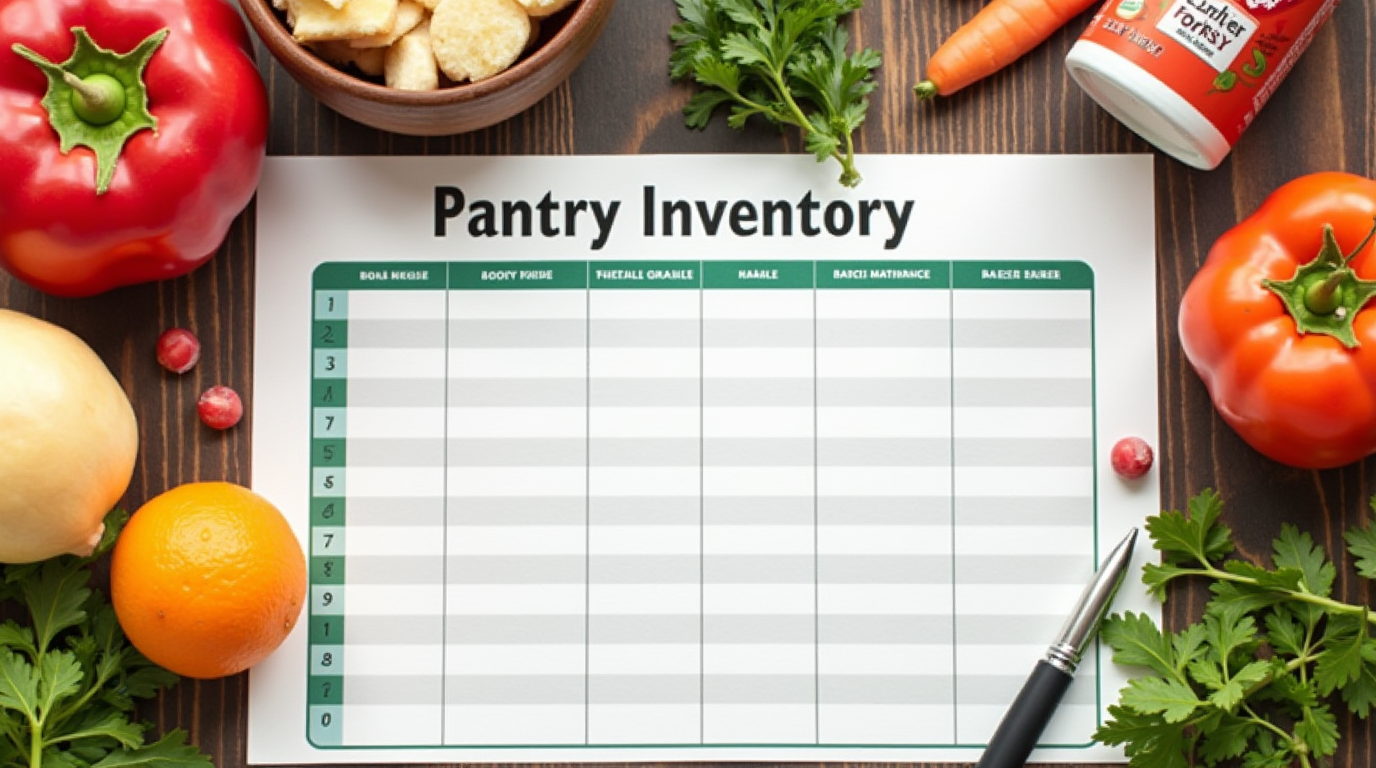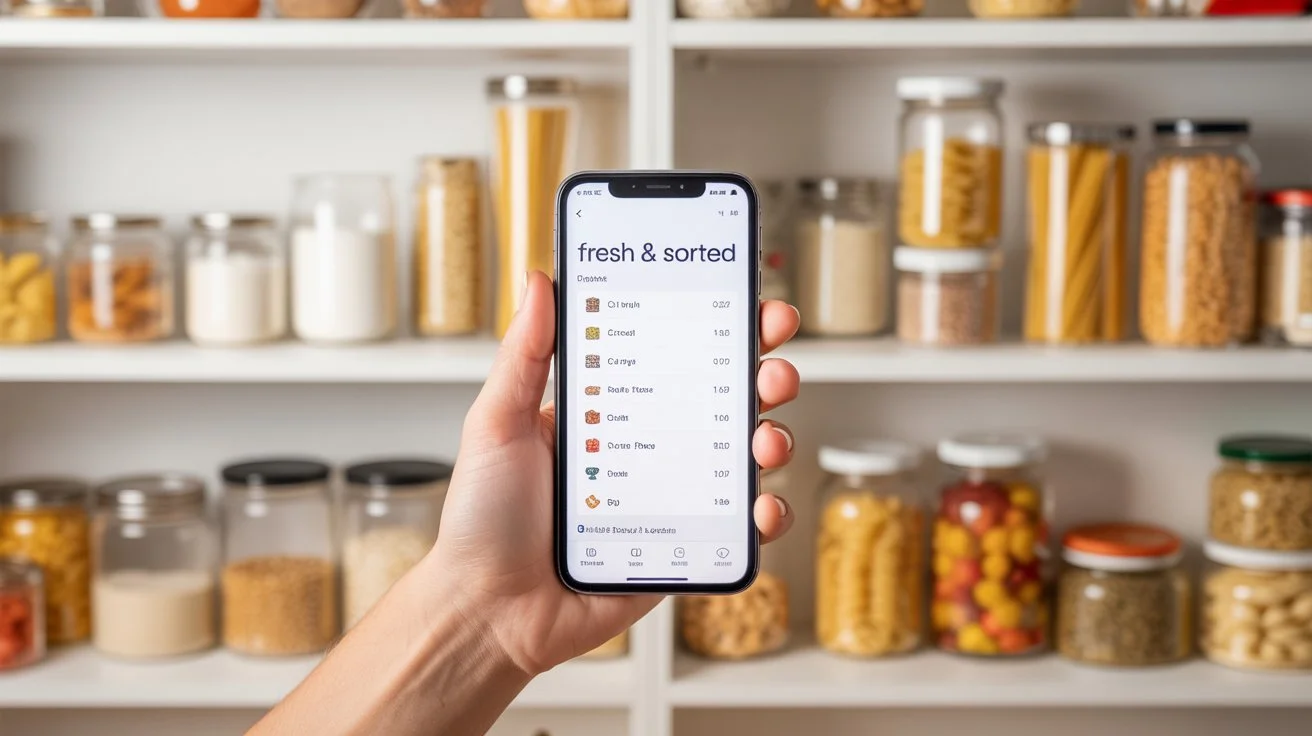How To Keep Track Of Pantry Inventory & Save Money
You did it! You tackled the pantry (and maybe even the fridge and freezer!), cleared out the expired stuff, organized the shelves, and maybe even created an initial inventory list or set up a new app. It feels amazing, right? Everything looks great, you know exactly what you have at this moment. But then life happens. You cook, you shop, things get used, new things arrive, and slowly but surely, the chaos starts to creep back in.
The truth is, creating a pantry inventory is just the first step. The real, ongoing challenge – and where the long-term benefits kick in – is learning How To Keep Track Of Pantry Inventory consistently over time. Without a system for maintaining your inventory, that initial burst of organization fades, items get lost again, food goes to waste, and you end up buying duplicates just like before. All that saved time and money slips away!
But don’t get discouraged! Keeping track isn’t about being perfect or spending hours every day. It’s about building simple, sustainable habits and integrating them into your existing kitchen routine. When you consistently maintain an accurate inventory, you unlock significant benefits that directly impact your wallet and your peace of mind. This post is your guide to mastering those habits and showing you exactly how keeping track of your pantry inventory reliably leads to saving you serious money. Welcome back to Paantry.com – we’re all about making kitchen organization work for you!
Why Consistency in Tracking Saves You Money
Let’s talk dollars and cents. An accurate, up-to-date pantry inventory isn’t just nice to have; it’s a powerful financial tool. When you master How To Keep Track Of Pantry Inventory consistently, you create a direct path to saving money in multiple ways.
Preventing the Return of Food Waste
Forgotten food at the back of the pantry or freezer is literally money in the trash. Consistent tracking, especially noting and reviewing expiry dates, ensures you know what needs to be used soon. By seeing those items flagged (whether on a list or by an app alert), you’re prompted to use them in your next meal, preventing them from spoiling. Less food wasted means less money down the drain!
Eliminating Guesswork (and Duplicate Purchases)
How many times have you stood in the grocery aisle, unsure if you have enough rice or if you’re completely out of chicken broth? Without a reliable inventory, the safe bet feels like buying more “just in case.” This leads to those frustrating moments of finding three boxes of the same thing back home. Keeping your inventory updated eliminates this guesswork entirely, directly preventing those costly duplicate purchases.
Smarter Shopping Trips
An accurate inventory transforms your grocery list from a hopeful wish list into a precise needs list. When you know exactly what you have (and don’t have) before you go shopping, you’re less likely to make impulse buys or grab items you already own. Your shopping trips become more focused, faster, and significantly cheaper. It’s the smart foundation for creating truly efficient grocery lists.
Better Budgeting
Knowing your full food stock allows for more flexible and budget-friendly meal planning. You can easily see what ingredients you have on hand and build meals around them, reducing your reliance on buying expensive specialty items or making extra trips for forgotten ingredients. This makes sticking to your grocery budget much more achievable.
Essential Habits for Keeping Track of Your Pantry Inventory
Maintaining your inventory isn’t about complicated procedures; it’s about building a few simple, consistent habits into your routine. These actions are the core of learning How To Keep Track Of Pantry Inventory effectively.
Update as You Use Items
This is perhaps the most crucial habit. Get into the practice of updating your inventory immediately after you use up an item or take out the last serving of something. Whether you cross it off a list, change the quantity in a spreadsheet, or mark it as used in an app, doing it in the moment prevents you from forgetting later. It takes seconds but maintains accuracy.
Add New Items IMMEDIATELY After Shopping
Your grocery haul is where inaccuracy often begins. The best time to add new items to your inventory is as you unpack them. As you place a new can on the shelf, quickly add it to your list or app, noting the quantity, location (pantry, fridge, freezer!), and most importantly, the expiry date. This ensures your inventory is current from the moment the food enters your home.
Practice FIFO During Restocking
Keeping track physically goes hand-in-hand with your written or digital inventory. FIFO stands for First-In, First-Out. As you put away new groceries, especially multiples of the same item, always move the older stock to the front of the shelf or bin. Your inventory list or app helps you identify which items are “First In” (closest to expiry), guiding your physical organization and ensuring those items get used before they expire.
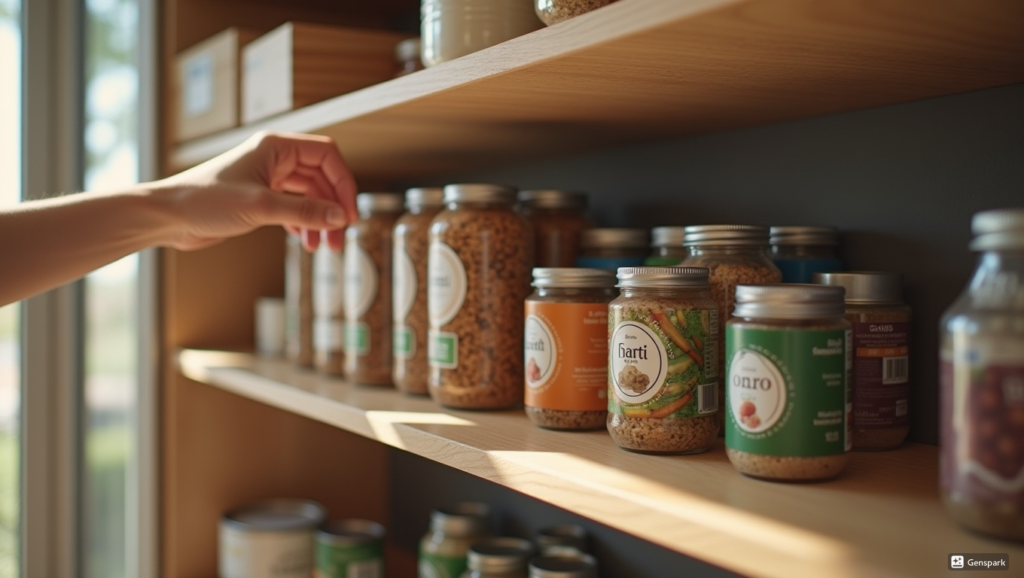
Schedule Regular Quick Scans (Digital & Physical)
Even with diligent updates, things can get missed. Schedule a quick 5-10 minute check-in with your inventory system and a fast visual scan of your pantry, fridge, and freezer shelves every week or two. Compare what you see to your list/app. This helps catch any items you forgot to log and ensures your inventory matches reality.
Note Expiry Dates Prominently
Whether you’re using a paper list with a dedicated column, a spreadsheet sorted by date, or an app with built-in alerts, make expiry dates easy to see and review frequently.
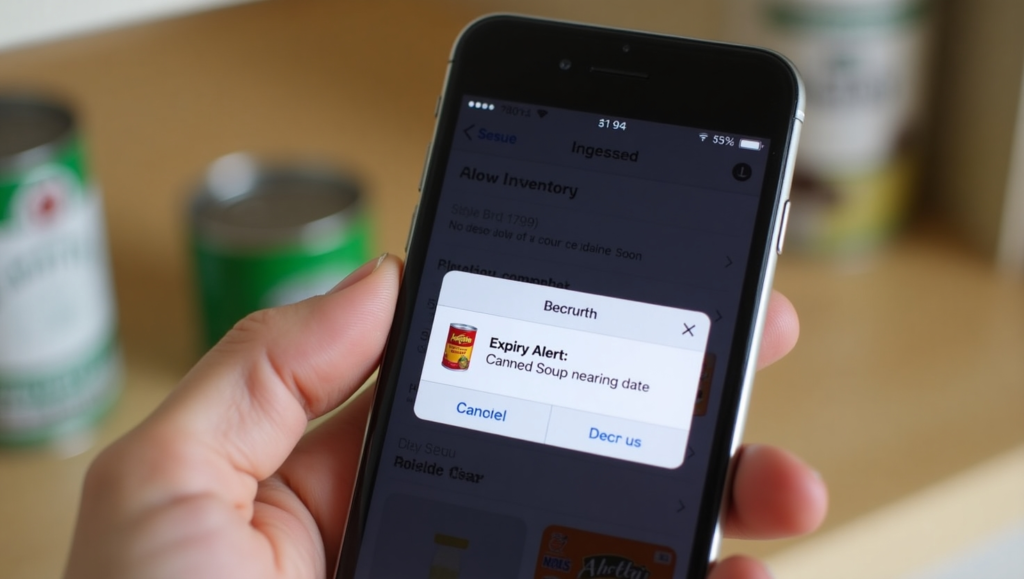
Regularly scanning these dates on your list or app helps you plan meals around items that need to be used soon, directly preventing waste and saving money.
Tools and Techniques That Support Consistent Tracking
The method you choose for your pantry inventory system can significantly impact how easy it is to keep track. While the core habits are the same, different tools offer different levels of support for ongoing maintenance.
The Power of Accessible Manual Lists
If you prefer a pen-and-paper or simple spreadsheet system, accessibility is your best friend for keeping track. Tape your list inside a frequently used cabinet door, keep your notebook right on the counter, or bookmark your spreadsheet on your computer’s browser bar. The less friction there is to access and update your list, the more likely you are to use it consistently.
Leveraging Pantry App Features for Maintenance
Pantry inventory apps are specifically designed with ongoing tracking in mind. Look for apps with features like quick edit buttons right on the main inventory screen, push notifications for nearing expiry dates, and multi-user syncing so everyone in the household can contribute to keeping the inventory accurate from their own devices. These features make updating almost effortless.
Physical Cues Help Digital Tracking
Don’t underestimate the power of physical organization in supporting your inventory tracking efforts. Using clear containers, consistent labels, and organizing items by category and date on your actual shelves makes it much faster and easier to do those quick visual scans and compare them against your list or app. Physical order supports digital accuracy!
Integrating with Your Shopping Routine
Connecting your inventory tracking to your grocery shopping is a powerful technique for consistency. When your inventory system (list or app) is the tool you use to generate your shopping list, updating it after your trip becomes a natural extension of putting groceries away. You’re already interacting with the system, making it easier to log the new items accurately.
Making the Habit Stick: Tips for Long-Term Success
Building any new habit takes time and conscious effort. Keeping track of your pantry inventory is no different. Understanding the principles behind forming lasting habits can make this process much easier. Learn more about building consistent habits. Here are a few tips to help you make this money-saving habit a permanent part of your kitchen routine.
Start Small
Don’t try to implement every single habit perfectly from day one. Pick one or two that seem most manageable – maybe just focusing on adding new groceries and updating when items are finished. Once those feel natural, add another habit, like the weekly quick scan.
Tie it to Another Habit
Pair the inventory update with something you already do consistently. For example, every time you finish unloading groceries, make updating your inventory the very next step before you relax. Or, every time you sit down to do your weekly meal planning, start by reviewing your inventory.
Get the Household Involved
If others use the food in your home, enlist their help! Show them how to quickly mark off an item on the list or in the app when they finish it. Even small contributions from everyone make keeping the inventory accurate much easier and reinforce the habit.
Celebrate Small Wins
See that item you used just before its expiry date? Remember that time you didn’t buy extra canned goods because you checked your inventory? Acknowledge these moments! They show you the tangible results of your consistent tracking – real food and real money saved!

Keep it Simple
If your current inventory method (list, spreadsheet, app) feels too cumbersome or time-consuming to maintain, it’s okay to simplify! A basic, easy-to-update system that you actually use consistently is infinitely better than a complex one that gets abandoned. Find what works for your life right now.
Conclusion
Learning How To Keep Track Of Pantry Inventory is the essential step that turns a one-time organization project into a powerful, ongoing system. By building simple habits like updating when you use items, adding new groceries immediately, and practicing FIFO, you gain the consistent accuracy needed to truly harness the benefits of inventory management.
This consistency directly translates into saving money by drastically reducing food waste, eliminating accidental duplicate purchases, and enabling smarter, more budget-friendly shopping and meal planning. Whether you use a paper list, a spreadsheet, or a dedicated app, the key is finding a method that fits your routine and committing to keeping it updated. Mastering inventory tracking is a vital component of a successful [Internal Link: Food Inventory Management System] and a fundamental habit for anyone looking to create a more organized, efficient, and money-saving kitchen.
FAQs
Q: How often should I update my pantry inventory?
A: Ideally, update it every time you use an item or add new groceries. At a minimum, schedule a quick review and update session weekly.
Q: What if I forget to update?
A: Don’t stress! Just update it as soon as you remember. Consistency over time is more important than perfect real-time accuracy every single moment. A regular quick scan helps catch missed items.
Q: Does keeping track take a lot of time?
A: After the initial setup, maintaining your inventory should only take a few minutes each time you put away groceries or cook a meal. Building it into your routine is faster than dealing with waste and disorganization later.


